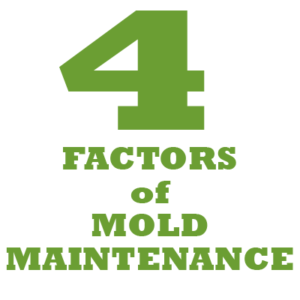 Quality. This one word sums up the need for having a defined mold maintenance program. Quality parts come from quality molds. But just like anything that is used as a tool, wear and degradation are part of the process. Having a maintenance program is an investment in quality.
Quality. This one word sums up the need for having a defined mold maintenance program. Quality parts come from quality molds. But just like anything that is used as a tool, wear and degradation are part of the process. Having a maintenance program is an investment in quality.
There are a few simple things that can make a significant difference, and are part of any program. The most basic is a maintenance log of your molds. This allows you to document little things that come up, as well having some level of documentation and information should something larger present itself with the mold. The other is to perform periodic maintenance as the tools are run in production.
Keeping track of the materials used for mold maintenance such as what type of degreasers and cleaners are used, what rust preventatives are applied, and what types of greases are being used can also help you identify opportunities for improvement at start up or when preparing the mold for storage.
There are also four factors that can determine the frequency and extent of maintenance required.
Mold Materials: The amount of wear on a mold, and the speed at which the mold wears will be directly related to the softness of the materials used to make it. Softer molds, like those made from aluminum and other conventional mold materials will wear faster than hardened steel.
Environment and Use: There are many factors under this category that can be monitored as part of your program. Monitoring and documenting factors such as clamp pressure and injection pressure can help to avoid subjecting the tool to excessive or extreme conditions. Lubrication of the appropriate and required components can also help with the overall longevity of the mold, and can be a factor in determining the optimal maintenance schedules. Finally, the way the mold is opened and closed can also be a factor in the overall maintenance requirements.
Molding Materials: There are two factors when it comes to what is being shot into the mold that can have a major impact. The first is melt temperature. Higher melt temperature materials will cause a mold to wear faster as it exposes the metals or material of the mold more heat exposure. The second is the type of fill materials used in the molding materials. In most cases, the materials are not liquid, and act as abrasives. Materials such as fiberglass, Mica and even wood are very abrasive.
Mold Complexity: Complex tooling, making complex parts will require a higher level of maintenance than a simple two plate, low precision part mold. Ejectors, slides, lifters, hot runners and small or thin mold components and others add to the maintenance that will be required for a tool.
Mold maintenance can play a significant role in helping to maintain consistent, high quality parts. By following the basic practices of maintaining a mold maintenance log and performing periodic maintenance, as well as taking into account the four factors that impact the frequency and extent of maintenance required, your quest for quality can be realized.
To learn more about how that Nanoplas family of mold maintenance products can be part of your successful program, contact us today!
